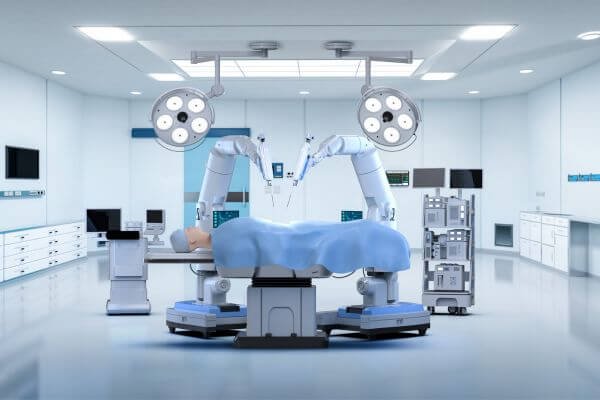Modern medicine is undergoing a quiet revolution, and nowhere is this more evident than in the operating room. For women facing gynecological surgery, the introduction of robot-assisted techniques has brought new hope—offering not just smaller scars and quicker recoveries, but also a level of surgical precision previously unimaginable.
What Is Robotic Surgery?
Robotic-assisted surgery is a minimally invasive technique where a surgeon uses a computer console to control robotic arms equipped with tiny surgical instruments and a high-definition 3D camera. Unlike traditional open surgery, which requires large incisions, or even standard laparoscopy, robotic surgery allows procedures to be performed through a few small cuts. Importantly, the robot doesn’t act independently—the surgeon is in complete control, guiding every movement with enhanced dexterity and vision.
Why Precision Matters in Gynecological Surgeries?
The female reproductive system is delicate and densely packed with vital structures. Whether treating fibroids, endometriosis, or ovarian cysts, even minor errors can affect fertility, organ function, or long-term health. Limited visibility or access in traditional surgery increases the risk of complications. That’s why precision—accurate incisions, careful tissue handling, and preservation of healthy organs—is so crucial.
How Robotic-Assisted Surgery Improves Surgical Precision?
Robotic systems elevate gynecological surgery in several key ways:
- 3D High-Definition Visualization: The surgeon sees a magnified, detailed, three-dimensional view of the surgical field, revealing structures that might be missed with standard cameras.
- Enhanced Dexterity: Robotic arms have “wristed” instruments that rotate far beyond the range of the human hand, making it easier to perform delicate maneuvers in tight spaces.
- Elimination of Hand Tremors: The system filters out even the smallest hand tremors, translating the surgeon’s movements into ultra-steady, precise actions.
- Targeted Treatment: This precision is especially valuable in removing fibroids, excising endometriosis, or treating ovarian cysts—procedures where accuracy directly impacts outcomes and future fertility.
Common Gynecological Procedures Using Robotic Assistance
Robotic technology is now used for a range of gynecological surgeries, including:
- Myomectomy: Removal of uterine fibroids while preserving the uterus.
- Hysterectomy: Removal of the uterus for conditions like fibroids, endometriosis, or cancer.
- Endometriosis Excision: Precise removal of endometrial tissue growing outside the uterus.
- Ovarian Cystectomy: Removal of ovarian cysts with minimal damage to healthy tissue.
- Pelvic Organ Prolapse Repairs: Restoring support to pelvic organs using mesh or sutures.
Benefits of Robot-Assisted Surgery for Patients
Women who choose robotic-assisted surgery often experience:
- Smaller Incisions and Minimal Scarring: Less visible scars and improved cosmetic results.
- Reduced Pain and Blood Loss: Less trauma to tissues means less pain and a lower risk of needing transfusions.
- Shorter Hospital Stays and Faster Recovery: Many patients go home the same day or within 24 hours, returning to normal life more quickly.
- Lower Risk of Infection and Complications: Smaller wounds and precise movements reduce the chance of postoperative problems.
Is Robotic-Assisted Surgery Right for You?
Not every gynecological patient will need robotic surgery, but it’s an excellent option for many—especially those with complex conditions, previous surgeries, or a desire to preserve fertility. Factors such as your medical history, the type of procedure, and your surgeon’s experience all play a role. That’s why consulting with a specialist like Dr. Merchant, who is trained in advanced minimally invasive techniques, is so important.
The Future of Robotic Surgery in Women’s Health
Robotic surgery is rapidly evolving, with new systems offering even greater flexibility and intelligence. As more clinics adopt this technology and surgeons gain experience, women everywhere can expect safer, more personalized surgical care. The focus remains on delivering the best possible outcomes—both in the operating room and in life beyond surgery.
Conclusion
Robotic-assisted surgery is transforming gynecological care, bringing together the best of technology and surgical skill. If you’re exploring advanced options for your health, consider how this innovative approach can offer precision, safety, and a smoother recovery. For expert advice and personalized care, reach out to Dr. Merchant and discover how robotic surgery could support your journey to wellness.

